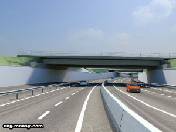How Bim Impriives Safety 4 From 5

Construc tability
Civil engineers typically design for code compliance, not for constructability.
But incorrect interpretations about design intent made in the field because of ambiguous documentation can lead to delayed schedules, change in orders and RFIs (requests for information) after construction begins.
Consider a typical new highway construction project with bridges and interchanges budgeted for 100m.
Typically, about seven to eight per cent of the investment will go into design development.
Reducing the design spend by 35 per cent with a more productive process saves 2.6 m.
But reducing the construction portion by 15 per cent by considering constructability during design saves nearly 14m.
These savings don’t take into account Litigation that can result from mistakes in the field.
Designing for constructability can help reduce these mistakes before they become a problem.
Rich BIM models allow the machine guidance to reach new levels of data capture and as-built object modeling. Machine control, with a CAD based model improves productivity on a job site, by eliminating the need for traditional stake-out methods. However, the BIM model offers the ability to work with specific objects, and update at an object Level the specificity of as-built information.
This includes capturing more than just points; it includes layers, material type, and underground utilities, contributing to a rich model to be used further in the process.
A single BIM model can be updated from variety of machine control applications simultaneously, and shared across multiple systems, minimising duplication of work.



